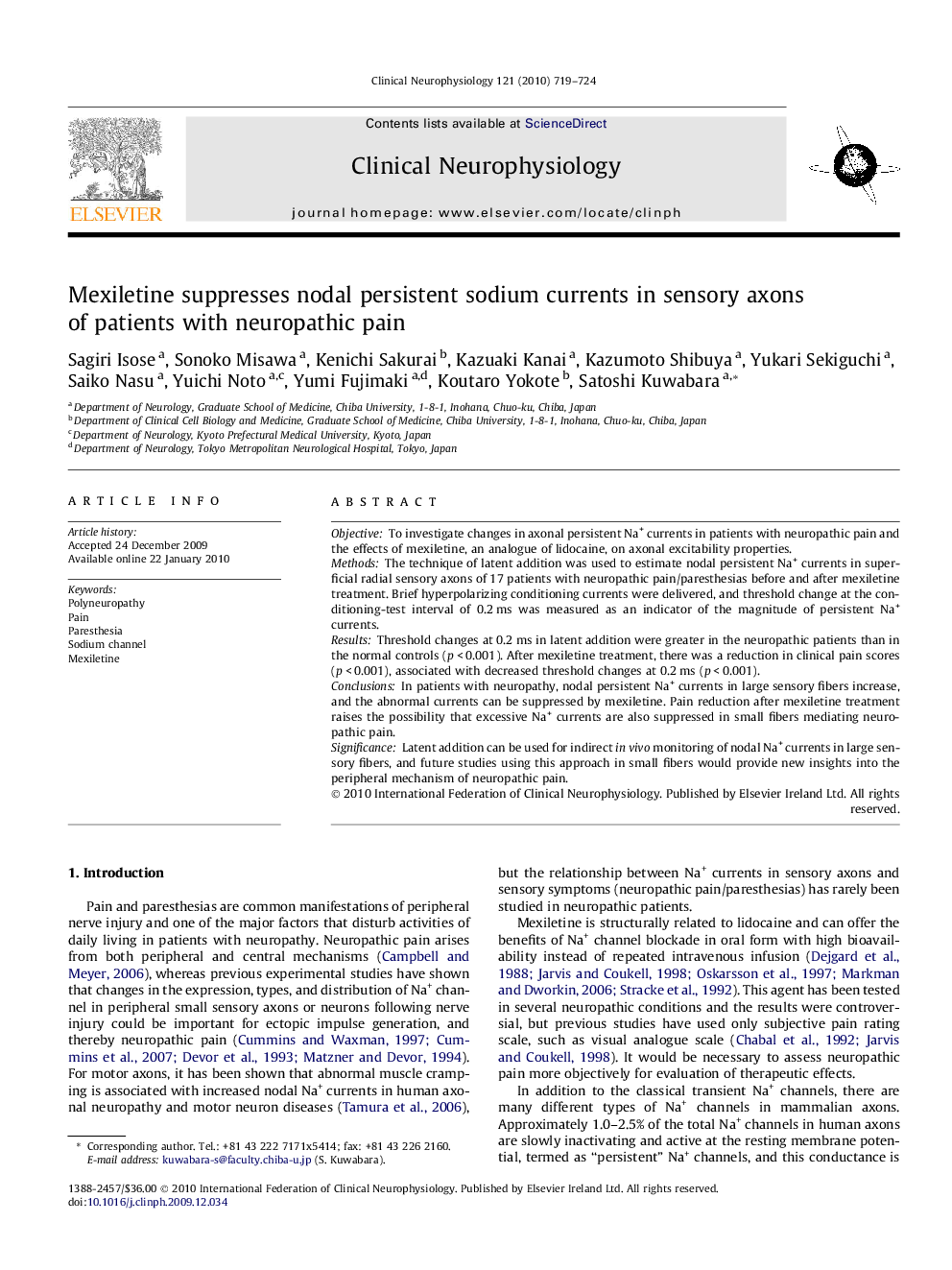| Article ID | Journal | Published Year | Pages | File Type |
|---|---|---|---|---|
| 3045755 | Clinical Neurophysiology | 2010 | 6 Pages |
ObjectiveTo investigate changes in axonal persistent Na+ currents in patients with neuropathic pain and the effects of mexiletine, an analogue of lidocaine, on axonal excitability properties.MethodsThe technique of latent addition was used to estimate nodal persistent Na+ currents in superficial radial sensory axons of 17 patients with neuropathic pain/paresthesias before and after mexiletine treatment. Brief hyperpolarizing conditioning currents were delivered, and threshold change at the conditioning-test interval of 0.2 ms was measured as an indicator of the magnitude of persistent Na+ currents.ResultsThreshold changes at 0.2 ms in latent addition were greater in the neuropathic patients than in the normal controls (p < 0.001). After mexiletine treatment, there was a reduction in clinical pain scores (p < 0.001), associated with decreased threshold changes at 0.2 ms (p < 0.001).ConclusionsIn patients with neuropathy, nodal persistent Na+ currents in large sensory fibers increase, and the abnormal currents can be suppressed by mexiletine. Pain reduction after mexiletine treatment raises the possibility that excessive Na+ currents are also suppressed in small fibers mediating neuropathic pain.SignificanceLatent addition can be used for indirect in vivo monitoring of nodal Na+ currents in large sensory fibers, and future studies using this approach in small fibers would provide new insights into the peripheral mechanism of neuropathic pain.
